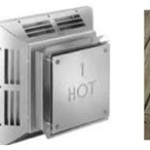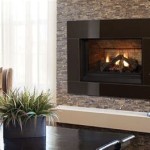Fireplace Cooking Grill: A Guide to Outdoor Culinary Adventure
Fireplace cooking grills are a unique and versatile addition to any outdoor living space. These grills, often integrated into pre-existing fireplaces or custom-built fire pits, offer an authentic and flavorful cooking experience that is both practical and aesthetically pleasing. This guide provides an overview of fireplace cooking grills, exploring their features, benefits, and considerations for installation and use.
Types of Fireplace Cooking Grills
Fireplace cooking grills come in various styles and designs, each with its own advantages and drawbacks. The most common types include:
- Built-in Grills: These grills are permanently installed within the fireplace structure, offering a seamless and integrated cooking experience. They are typically made of durable materials like cast iron or stainless steel and can be customized to suit specific needs.
- Portable Grills: Portable grills can be easily moved in and out of the fireplace, providing flexibility and convenience. These grills may be constructed from various materials, including cast iron, steel, or even ceramic.
- Hanging Grills: These grills are suspended above the fire using chains or hooks, allowing for adjustable height and convenient access. Hanging grills are often made of cast iron or steel and are ideal for smaller grilling tasks.
Benefits of Fireplace Cooking Grills
Fireplace cooking grills offer a range of benefits, including:
- Authentic Flavor: The wood-fired heat from a fireplace imparts a unique and robust flavor to grilled foods, unmatched by gas or electric grills.
- Versatile Cooking: Fireplace grills can be used for a wide variety of cooking methods, including grilling, smoking, roasting, and baking.
- Rustic Charm: Fireplace cooking grills add a touch of rustic charm and ambiance to any outdoor setting, making them perfect for entertaining guests.
- Cost-Effectiveness: Using wood as a fuel source can be significantly more cost-effective than propane or natural gas, especially for those who have access to firewood.
Considerations for Fireplace Cooking Grill Installation and Use
Before installing and using a fireplace cooking grill, several factors should be considered:
- Fireplace Size and Design: Ensure that the fireplace is large enough to accommodate the chosen grill and provide adequate ventilation. The grill should be positioned safely away from combustible materials.
- Fireplace Safety: Always follow manufacturer instructions and local safety regulations when operating a fireplace cooking grill. Use proper fire safety equipment and supervise children and pets around the fireplace area.
- Fuel Source: Choose a suitable wood fuel for grilling. Hardwoods like oak, hickory, and maple produce a consistent heat and flavorful smoke. Avoid using softwoods or treated lumber.
- Cooking Techniques: Understanding proper grilling techniques is crucial for success with fireplace cooking. Experiment with different wood types, heat levels, and cooking times to find the best results for your desired dish.
In conclusion, fireplace cooking grills offer a unique and rewarding culinary adventure. Their authentic flavor, versatility, and rustic charm make them a sought-after addition to any outdoor space. By carefully considering installation and usage factors, you can enjoy the benefits of fireplace cooking and create delicious meals that will be remembered for years to come.

Spitjack All Stainless Tuscan Fireplace And Camping Grill

Cooking At Home Over A Wood Fire Charles Van

Cooking With A Mother Fire Charles Van Over

Enhance Your Outdoor Cooking Experience With Our Swinging Grill

Grate For Outdoor Fireplace Cooking Diy Kitchen Design

Fire Pit Grill Outdoor Sea Island Forge

Girse Outdoor Fireplace And Bbq Robey S

Rome Adjustable Cooking Mpn 130 Barbecue Grates Racks

Have Fun Cooking On Your Outdoor Fireplace We Love Fire

Fire Pit Grill Outdoor Sea Island Forge
Related Posts








